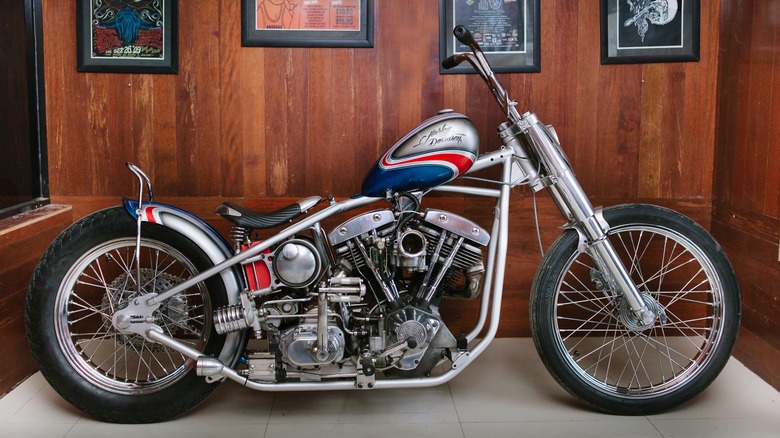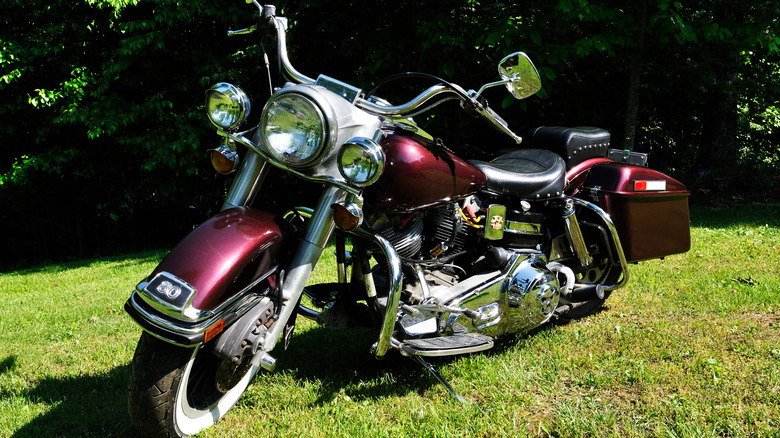Here's How The Harley-Davidson Shovelhead Engine Got It's Name
Although Harley-Davidson is synonymous with high-quality motorcycles, the company doesn't get enough credit for its creative engine names. In fact, the manufacturer had an entire line of head-themed engines, including the Knucklehead, Panhead, and Shovelhead, with some featuring in the rarest Harley-Davidson motorcycles ever built. For better or worse, the Shovelhead stands apart in terms of popularity, even Elvis Presley had one, but how did it get its name?
Harley-Davidson's Shovelhead engine debuted in the mid-1960s after demand skyrocketed for a more powerful engine capable of moving modern, heavier motorcycles. Naturally, as the successor to the Panhead (which itself came after the Knucklehead), it was pretty obvious that Harley-Davidson needed to continue the naming system trend, and so the Shovelhead was born.
Following in suit of its predecessors, the Shovelhead engine got its name from the shape of its rocker covers, also known as valve covers. At the time, the newly-designed engine parts drew similarities to the blade of a coal shovel. Unsurprisingly, the Knucklehead and Panhead also got their naming inspiration from the shape of the engines' rocker covers. Although today, the Shovelhead's valve covers resemble a V or U, its shovel-like shape gave Harley-Davidson an apt name to continue its head-themed engine line.
What happened to the Shovelhead engine?
Shovelhead isn't Harley-Davidson's most powerful motorcycle engine, but it had a successful run from 1966 to 1982. Unfortunately, time more or less ended the Shovelhead engine's reign. However, it wasn't the same situation as the Panhead, which ultimately wasn't strong enough for modern motorcycles. Instead, geopolitics marked the end of the Shovelhead.
In 1974, the ramifications of the ongoing oil crisis began to take effect, resulting in fuel scarcity. What gasoline was available had a lower octane number which made it less stable and consistent, bringing a slew of problems to engines worldwide. With the Shovelhead, the low-quality fuel resulted in engine knocking which then caused overheating. As the engine got hotter, the aluminum expanded and oil leaks quickly became a problem. Unfortunately, American Machine and Foundry, the owners of Harley-Davidson at the time, decided to continue production without addressing the engine's issues.
It didn't take long for oil leakage to become a serious problem for the Shovelhead. In fact, it was so bad that it overshadowed everything Harley-Davidson had accomplished with the engine, earning it a notorious reputation. It was eventually replaced by the Evolution engine. Today, the oil leak problems are arguably the most well-known aspect of the Shovelhead.

